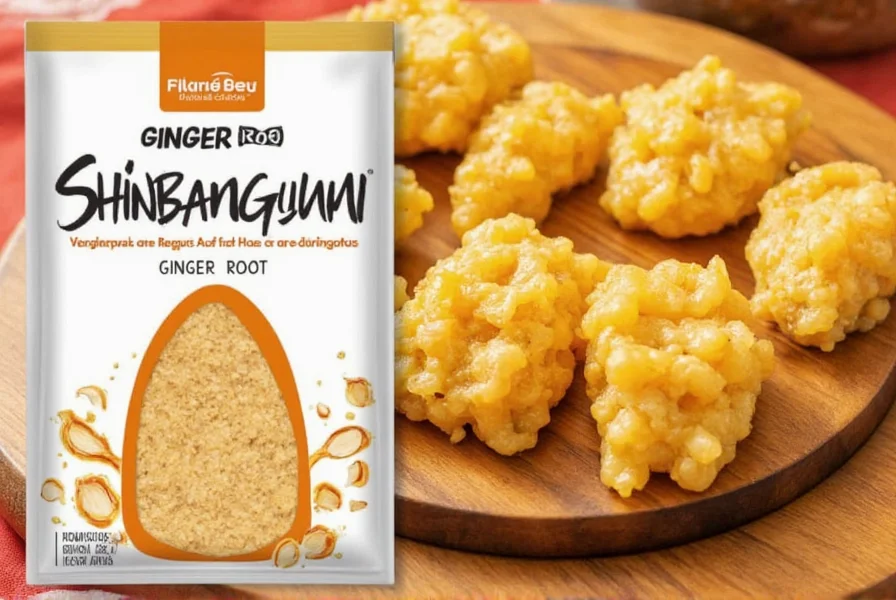Ginger root (Zingiber officinale) has been used for centuries in traditional medicine systems across Asia and the Middle East. Modern research confirms its effectiveness for nausea relief, particularly during pregnancy and chemotherapy, with studies showing significant reduction in symptoms compared to placebo. The active compounds gingerols and shogaols provide potent anti-inflammatory effects that may help manage osteoarthritis pain.
Understanding the 'Shinbangumi' Confusion
The term 'shinbangumi' doesn't correspond to any established ginger product, Japanese formulation, or recognized supplement brand. This appears to stem from one of several common misunderstandings:
- Shinsengumi confusion - Mistaking 'shinbangumi' for 'Shinsengumi,' the famous 19th century Japanese special police force
- Japanese media terminology - 'Bangumi' (番組) means 'program' in Japanese, often used for TV shows, while 'shin' (新) means 'new'
- Product name misinterpretation - Possibly confusing with Japanese-branded ginger products like 'Shin' (a common prefix meaning 'new' in product names)
When searching for authentic Japanese ginger products, look for terms like 'shōga' (生姜) which is the Japanese word for ginger. Reputable Japanese brands often include 'shōga' in their product names rather than 'shinbangumi.'

How to Evaluate Quality Ginger Root Products
When researching ginger supplements or products, focus on these evidence-based quality indicators rather than searching for non-existent 'ginger root shinbangumi' formulations:
| Quality Indicator | What to Look For | Red Flags |
|---|---|---|
| Active Compound Content | Standardized to 5% gingerols minimum | No potency information provided |
| Sourcing Transparency | Specific origin (Nigeria, India, China) | Vague "premium" or "natural" claims |
| Third-Party Testing | USP, NSF, or ConsumerLab verification | No independent testing mentioned |
| Formulation Type | Extract concentration (e.g., 10:1) | "Proprietary blends" with hidden amounts |
Scientific Evidence on Ginger Root Benefits
Rigorous clinical trials support several evidence-based applications of ginger root:
- Nausea and vomiting - A 2022 meta-analysis in Nutrients found ginger significantly reduced pregnancy-related nausea (average 20-25% improvement over placebo)
- Osteoarthritis management - Research in Arthritis & Rheumatology demonstrated ginger extract reduced pain scores by 30% compared to baseline
- Post-exercise muscle soreness - Studies show 2g daily reduces soreness by 25% when taken before intense activity
However, many popular claims about ginger lack strong evidence. No quality research supports ginger as a 'miracle cure' for weight loss, cancer prevention, or diabetes management as some misleading websites suggest when reviewing supposed 'ginger root shinbangumi' products.

Avoiding Misleading Ginger Product Reviews
Be cautious of websites promoting 'ginger root shinbangumi' reviews, as these often exhibit these red flags:
- Using Japanese-sounding terms incorrectly to appear authentic
- Making exaggerated health claims not supported by research
- Featuring fake 'clinical studies' with invented researchers
- Creating urgency with limited-time offers for non-existent products
Reputable sources for ginger information include the National Center for Complementary and Integrative Health (NCCIH), peer-reviewed journals, and university extension programs. When evaluating any ginger product review, check if the author discloses potential conflicts of interest and cites primary research rather than secondary sources.
Practical Guide to Choosing Ginger Products
For consumers seeking genuine ginger root benefits, consider these practical recommendations:
- Fresh ginger - Look for firm, smooth rhizomes without wrinkles or mold; stores well frozen for up to 6 months
- Dried powder - Choose organic options with visible ginger fiber; avoid products listing 'ginger flavor' instead of 'ginger root'
- Supplements - Opt for standardized extracts with 5% minimum gingerols; typical effective dose is 1-2g daily
- Teas - Verify they contain actual ginger root rather than just 'natural flavors'
Remember that 'ginger root shinbangumi' isn't a legitimate product category. Focus instead on evidence-based evaluation criteria when selecting ginger products for digestive support, inflammation management, or other research-supported uses.











 浙公网安备
33010002000092号
浙公网安备
33010002000092号 浙B2-20120091-4
浙B2-20120091-4